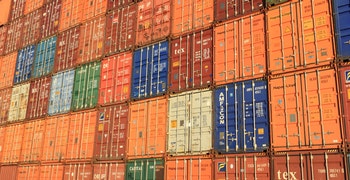
3 steps you can take to grow cross-border sales for your ecommerce business
From New York to New Delhi, roving stay-at-home orders designed to slow the spread of the coronavirus have changed the way we live, play, and consume. Some of us spent at least 35% more time than usual in residential areas during lockdowns in 2020, and some of us are back home again to stave off new variants. With fewer outings afoot, we can sleep more, read more, watch more, and shop more online — both with familiar retailers and new favorites abroad.
Global online retail sales reached $4.29 trillion last year, surpassing 2019’s online sales by approximately 25%. Though such meteoric growth may not last, ecommerce is expected to keep growing in the coming years. And that can bring new opportunities to retailers willing to sell across borders.
Earlier this year, more than half of consumers surveyed across five countries said they buy from retailers based overseas. They’re lured by lower prices at times, but also seek products they can’t find closer to home. Some like going to the source of well-known international brands, while others revel in discovering eclectic products and retailers. Online shopping puts all possibilities on the screen.
Although cross-border sales don’t flow in only one direction, some individuals embrace international ecommerce more readily than others. Generally, people living in countries with a plethora of domestic online retailers turn to foreign sellers less frequently than people living in countries with fewer choices. Thus, while 72% of Mexican consumers shop cross-border, only about 37% of American consumers do the same.
That could help explain why American retailers tend to be less likely than their international counterparts to market and sell to consumers on other continents. Whatever the reason, retailers will need to overcome self-imposed limitations to grow sales in 2021 and beyond. After all, North America is home to less than 5% of the total world population. By contrast, Asia contains close to 60% of the world’s people.
China is perhaps “the largest and most innovative retail ecommerce market in the world,” so trends coming out of China can help guide North American retailers looking to grow international sales. Two stand out: Live commerce and the predominance of mobile storefronts.
1. Take your online shopping live
Streaming entertainment has been a lifesaver for many during the pandemic. Real-time videoconferencing platforms like Zoom have kept us connected during long months spent working, schooling, and socializing from home. And in some parts of the world, livestreaming ecommerce is increasingly being used to boost sales.
MIT Sloan Management Review calls livestreaming ecommerce (aka, live commerce) “basically a refresh of the old late-night TV infomercial” — except it’s “dynamic, exciting, and occurs in prime time.” Through this model, celebrities, influencers, or retailers showcase products live, in real time, on an ecommerce platform or social media site. Viewers can browse the products they see and even purchase them through viewing apps like TikTok.
Even before COVID-19 reduced the appeal of and opportunities for in-person shopping, a good host in China could reportedly bring in millions in sales in just a few hours of live commerce. During Taobao’s 2020 Single-Day Global Shopping Festival, livestreams generated roughly $6 billion in sales. With those types of numbers, retailers the world over are starting to see the appeal.
It’s possible to reach audiences the world over by connecting with influencers from different countries. But people will only tune into livestreaming ecommerce events if they can connect to the internet. Phones are key to connectivity in much of the world.
2. Give your mobile store a face-lift
Just about everyone of a certain age has (or wants) a phone, and in many parts of the world, a phone is the only way consumers can reliably connect to the internet. Between 700 to 800 million people in China connect to the internet via their phones regularly, as compared to 300 million people in the U.S. In India, where hours spent on cell phones increased by 75% in 2020, users depend on phones for everything from streaming entertaining to managing their finances.
In fact, approximately 60% of all internet search volume now occurs on mobile devices. Data suggests more people are buying through mobile sites than ever before, even when they’re within easy reach of a desktop. At the same time, mobile browsers tend to spend less time per page than their desktop counterparts, and although a lot of browsing starts in the palm of a hand, more purchases occur on desktops. According to recent data, “the ecommerce conversion rate for desktops was 4.81% while the rate for mobile devices was only 2.25%.” The fact that many mobile sites still provide a clunky, frustrating experience is likely a contributing factor.
Businesses willing to fine-tune their mobile store will appeal to cross-border consumers accustomed to browsing by phone. It’s as simple as that.
Of course, it’s not simple to build your brand with consumers in other parts of the world. Cross-border sellers face unique challenges, and not just from container ships wedged in the Suez Canal. Delivery times can be longer, there can be holdups at the border, and the exchange and returns process can be a bear.
Since customer experience impacts brand loyalty, the better a customer’s experience, the more likely they are to become a repeat customer. One way to ensure cross-border transactions go smoothly is to be upfront about customs duty and import tax.
3. Be transparent about customs duty and import tax
Governments worldwide are looking to increase tax collections from cross-border sales. As of January 1, 2021, for example, the British government requires U.S. retailers selling directly to consumers in the U.K. to collect value-added tax (VAT) at checkout for goods valued at or below £135; this includes goods entering the country that are valued ≤£15, which were previously exempt from VAT. Also, effective July 1, 2021, the European Union will end its low-value import VAT exemption.
Just as it’s essential to get sales tax right in the U.S., getting customs duty and import tax right is key. In fact, it may even be more important.
When sales tax isn’t collected by a retailer in the U.S., the consumer is liable for the corresponding consumer use tax. In some states, use tax is paid and reported annually, along with state income tax. In others, it must be remitted directly to the state tax authorities. Either way, consumer use tax liability doesn’t impact delivery. For the most part, goods that are ordered are received, whether sales tax was collected or not.
It’s different with cross-border sales. When customs duty and import VAT aren’t collected at checkout, shipments are typically held at customs until the consumer pays the tax and duty owed. Instead of opening the door to a much-anticipated dress or slingshot, buyers get a message that their package will be delivered after they pay the tax and duty they owe. It’s not a great customer experience.
Concealing the true cost of shipping or the applicable duties and taxes from customers may seem like a good way to make a sale, but it tends to backfire when the final bill is due. It’s best to come clean with the true cost of a transaction at the outset.
Any company interested in growing global ecommerce sales must establish a process to get international tax compliance right. And there are literally billions of reasons to sell internationally: More than 7 billion, including the roughly 10 million Americans living outside of the U.S.
Learn more about why cross-border ecommerce is so important today and how to succeed in the global market in this retailer’s guide to overcoming cross-border ecommerce hurdles.

The Avalara Tax Changes midyear update is here
Trusted by professionals, this valuable resource simplifies complex topics with clarity and insight.
Stay up to date
Sign up for our free newsletter and stay up to date with the latest tax news.













